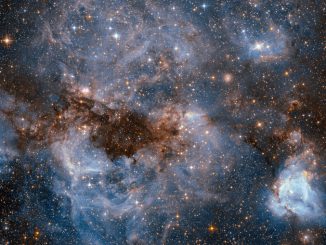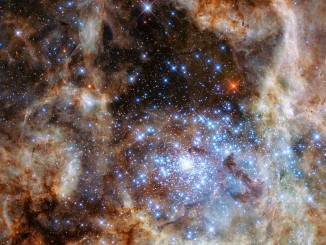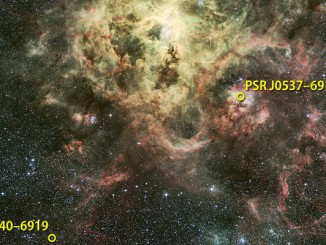
Tarantula Nebula




Hubble peers into the maelstrom
This NASA/ESA Hubble Space Telescope image shows a stellar nursery known as N159 — a maelstrom of glowing gas and dark dust within one of the Milky Way’s satellite galaxies, the Large Magellanic Cloud (LMC). N159 is located over 160,000 light-years away. It resides just south of the Tarantula Nebula, another massive star-forming complex within the LMC.

Hubble unveils monster stars in the Tarantula Nebula
Astronomers using the unique ultraviolet capabilities of the NASA/ESA Hubble Space Telescope have identified nine monster stars with masses over 100 times the mass of the Sun in the star cluster R136, located in the Tarantula Nebula within the Large Magellanic Cloud. This makes it the largest sample of very massive stars identified to date.

NASA’s Fermi satellite detects first gamma-ray pulsar in another galaxy
Researchers using NASA’s Fermi Gamma-ray Space Telescope have discovered the first gamma-ray pulsar in a galaxy other than our own. Known as PSR J0540-6919, the object sets a new record for the most luminous gamma-ray pulsar known. The pulsar lies in the outskirts of the Tarantula Nebula in the Large Magellanic Cloud, a small galaxy that is located 163,000 light-years away.

Final kiss of two stars heading for catastrophe
Using ESO’s Very Large Telescope, an international team of astronomers have found the hottest and most massive double star with components so close that they touch each other. The two stars in the extreme system VFTS 352 could be heading for a dramatic end, during which the two stars either coalesce to create a single giant star, or form a binary black hole.
